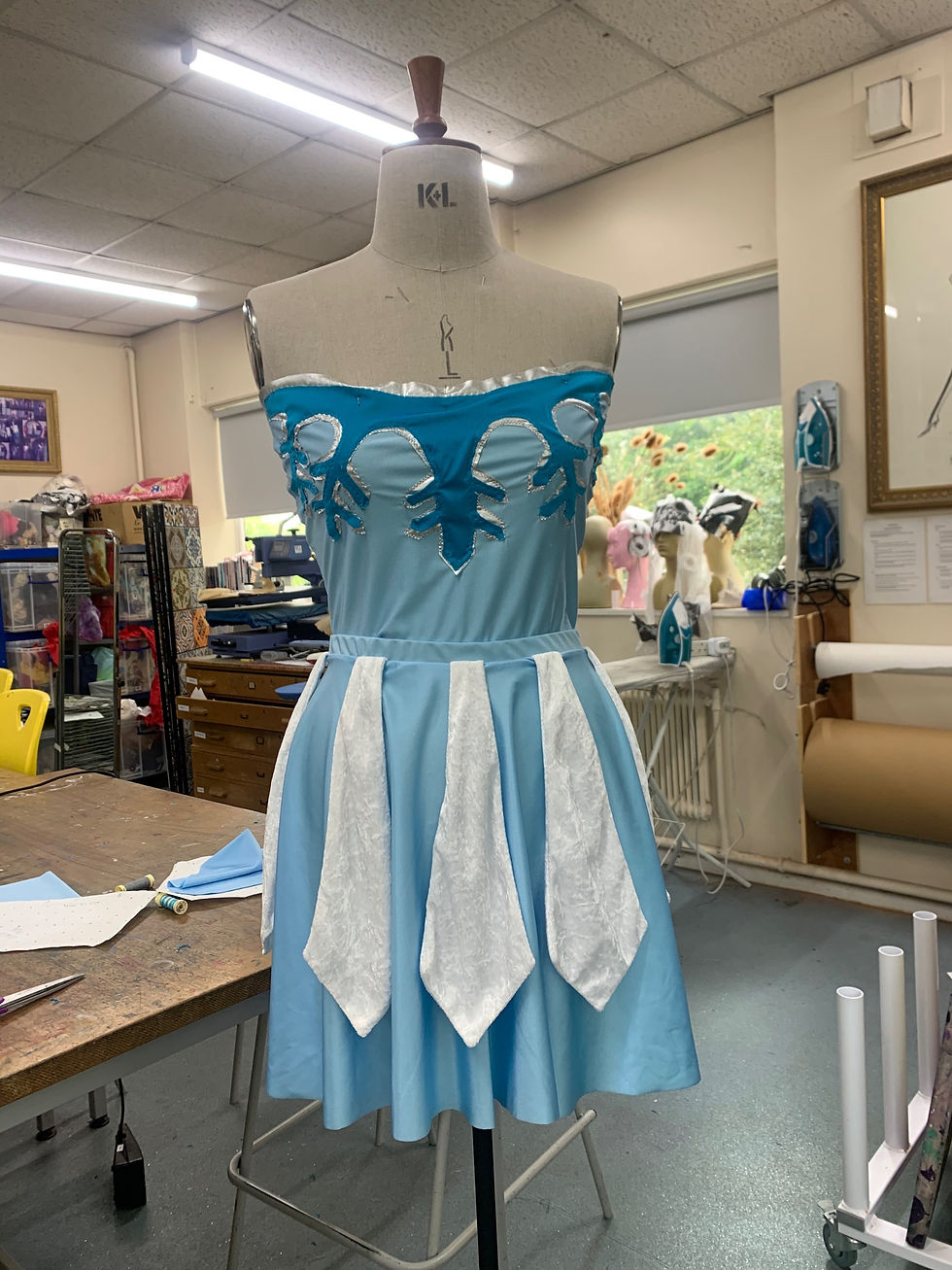LOOKING AT TROUSER STYLES IN PATTERN CUTTING
- Louise Love
- Jan 21, 2023
- 3 min read
Updated: Jan 25, 2023
In recent pattern cutting lessons we have been looking at different trouser styles and how to manipulate the trouser block to create them.
As part of my work I have created mini trouser samples as patterns and toiles to explore this.
Creating the flared trousers
In order to create the pattern for the flared trousers, I started by tracing-off the basic trouser block front and back, and I then marked the point on the trousers at which I wanted them to flare-out from.
I then also marked out equal distances from either side of the hem, how much added with and flare I wanted to add. This them enabeled me to draw a line connecting those points which I then curved round nicely with the pattern master to avoid sharp edges.
To then finish off the hem, I needed to make sure the seams met at right angles and so what I did was to draw two lines from the end of each side seam that I then graded with a curve to again avoid the pointy edges. My pattern was then complete and I also added seam/hem allowances, as well as marking on notches and darts ready to sew.
To sew the flared style trousers was quite a simple process and what I did was to first sew the darts and them simply join the inner and outer leg seams (right-sides-together), pressing flat into place. At this point you could then join the other leg but for my sample I have just created the one. I also had a think about how I might hem these trousers - could something like a facing hem be best for the more curved edge?!
Creating the panelled trouser
To create the pattern for the panneled trouser, I wanted to create for panels so two at the front and two at the back like a half split. I think panels could be an effective way to contrast patterns for the upcoming pattern crazy project.
To make the pattern, I again started with the basic trouser block that I traced-off with the darts.
I then marked a straight line along the centre front and back of the trouser, where I used a fold down the centre for accuracy. I then cut out the four legs, incooperating the darts at the waist for shaping (cutting the darts out in the same way as done with something like princess seams). Next was to then add seam allowances and hem allowance. I also found notches to be useful so that I know which panels joined where.
To sew the panelled trouser, I joined up the notches for each panel, right sides together. I then did the same with the side seams. Here, pressing the pannels nice and flat was really important so that everything sat neatly in place.
At this point you would sew the hem and attatch the other trouser leg.
For this experiment, I would like to look more at different ways I could use pannels to create crazy and unique shapes that link to my theme.
Creating the pleated trouser
For my pleated trouser, I wanted to create something a little different from the basic knife pleats at the waist, so I looked at creating an inverted box pleat that would flare-out towards the bottom of the trouser leg.
To add the pleat to the block, what I did was to cut and slash down the centre of the front leg and I then added in 4x the width of the pleat I wanted to add (which was 2cm on the small scale), so that I could create two folds that meet in the middle. Then all was left to do was to add seam and hem allowances.
To sew the box pleat into place, I first pressed in the fold and pinned to hold. I then marked the point at which I wanted the pleat to flare out from and stitched down the fold to this point. I then joined the back leg with side seams right sides together. I really liked the effect of the box pleat and would like to experiment and see if there is a way I could create the pleat in contrast pattern fabric for the pattern crazy brief!
Overall, I really enjoyed experimenting with different trouser styles and am looking forward to seeing how I can develop these to link more closely to my pattern crazy theme...























Comments